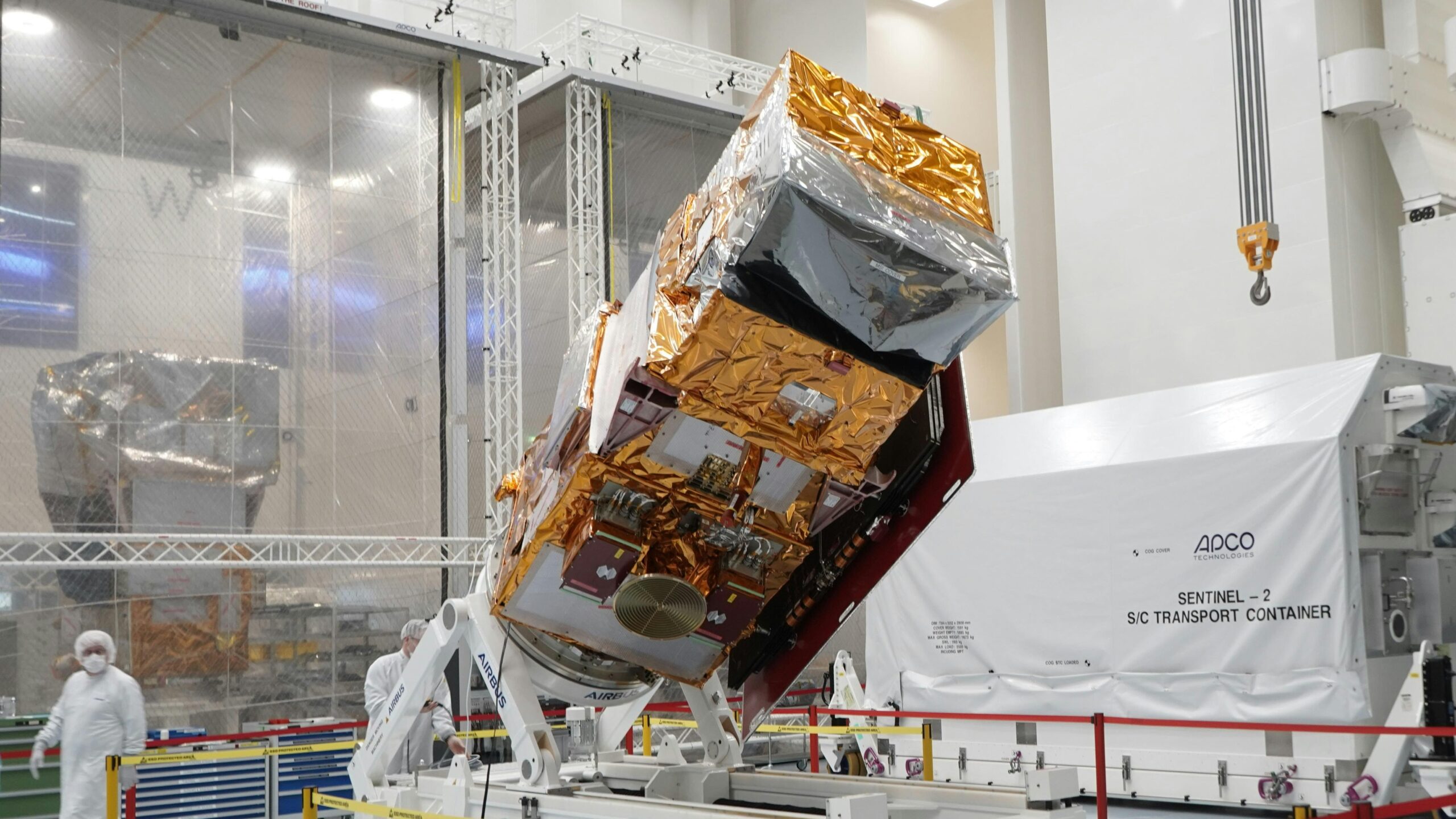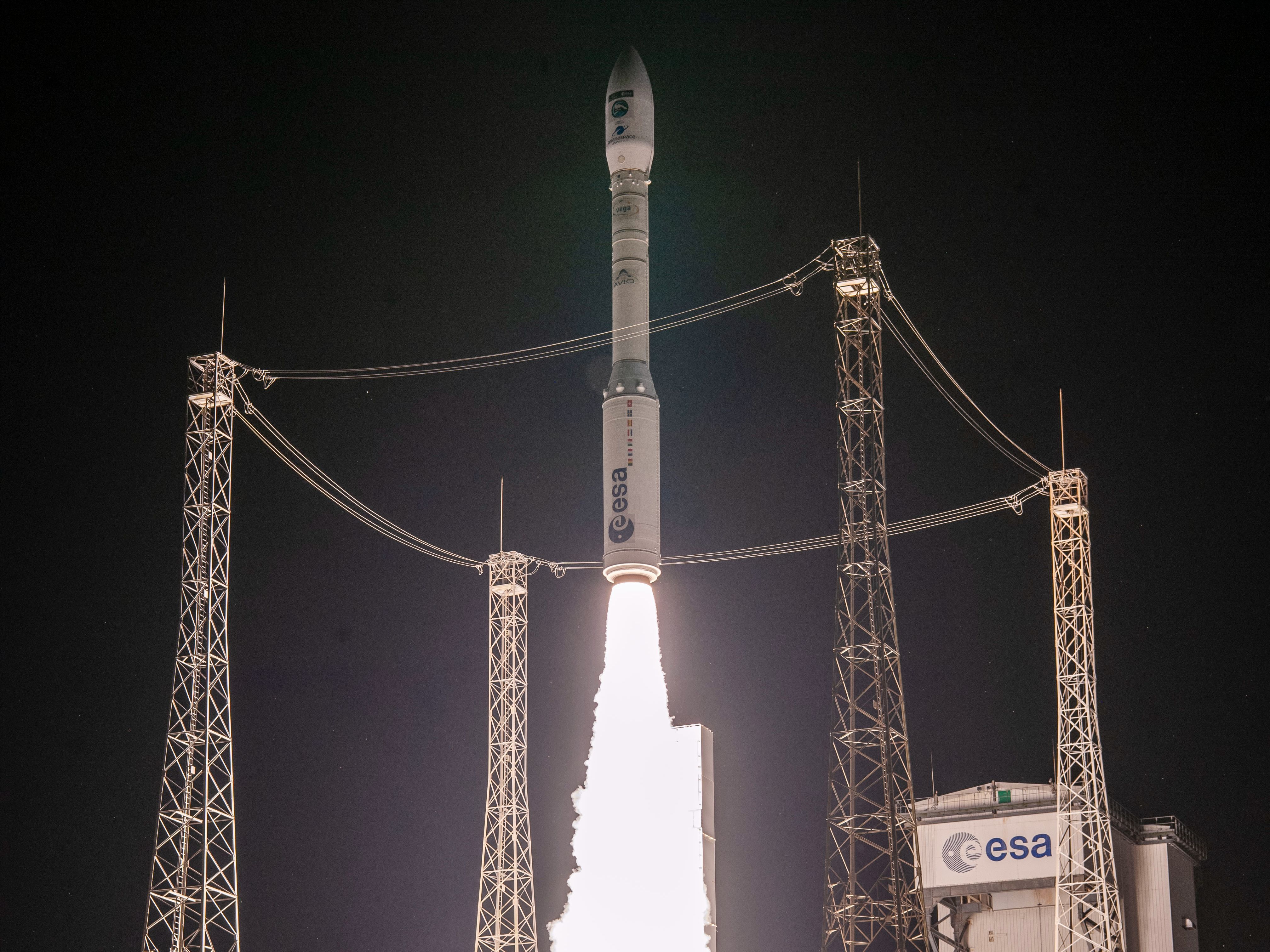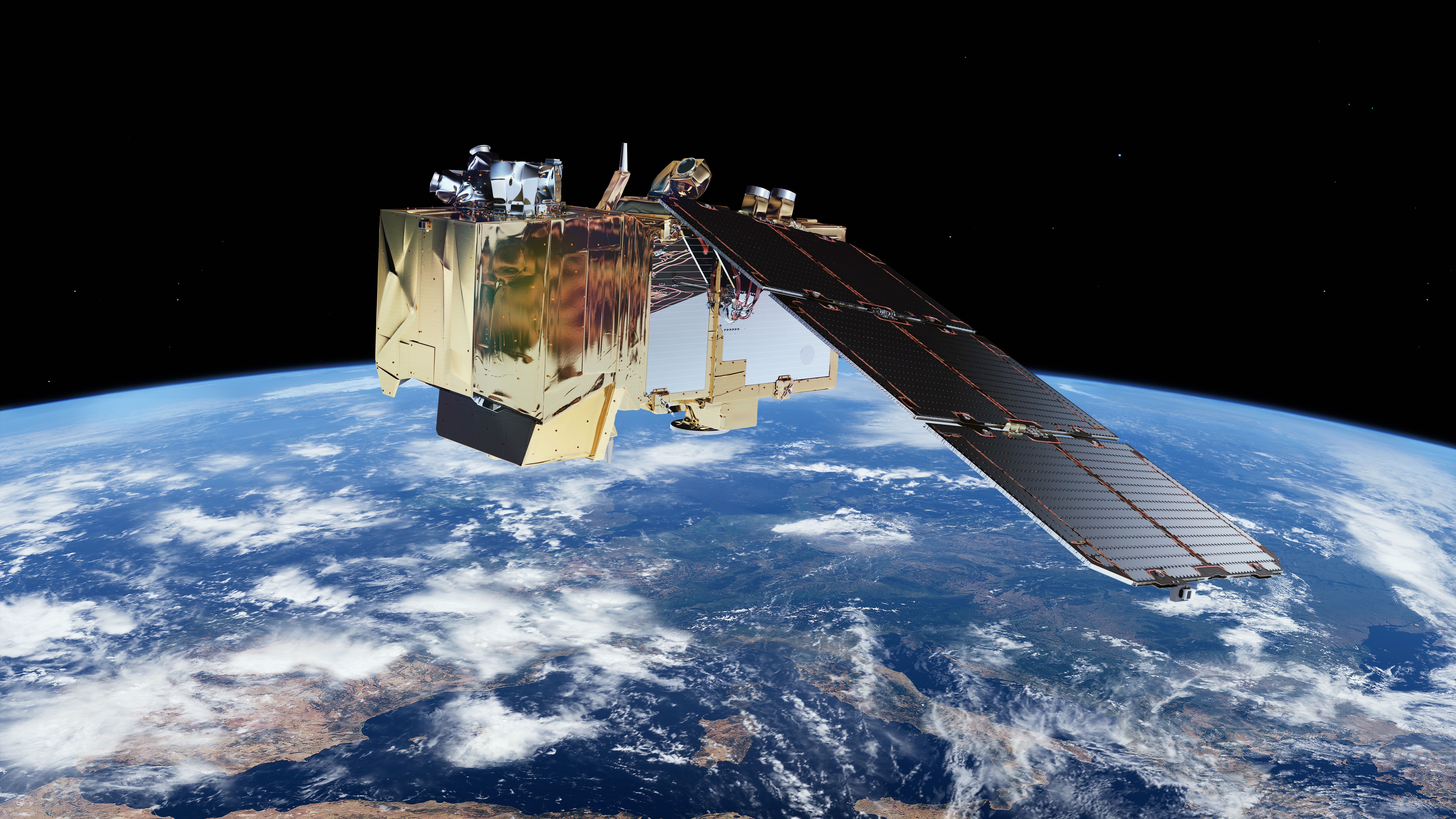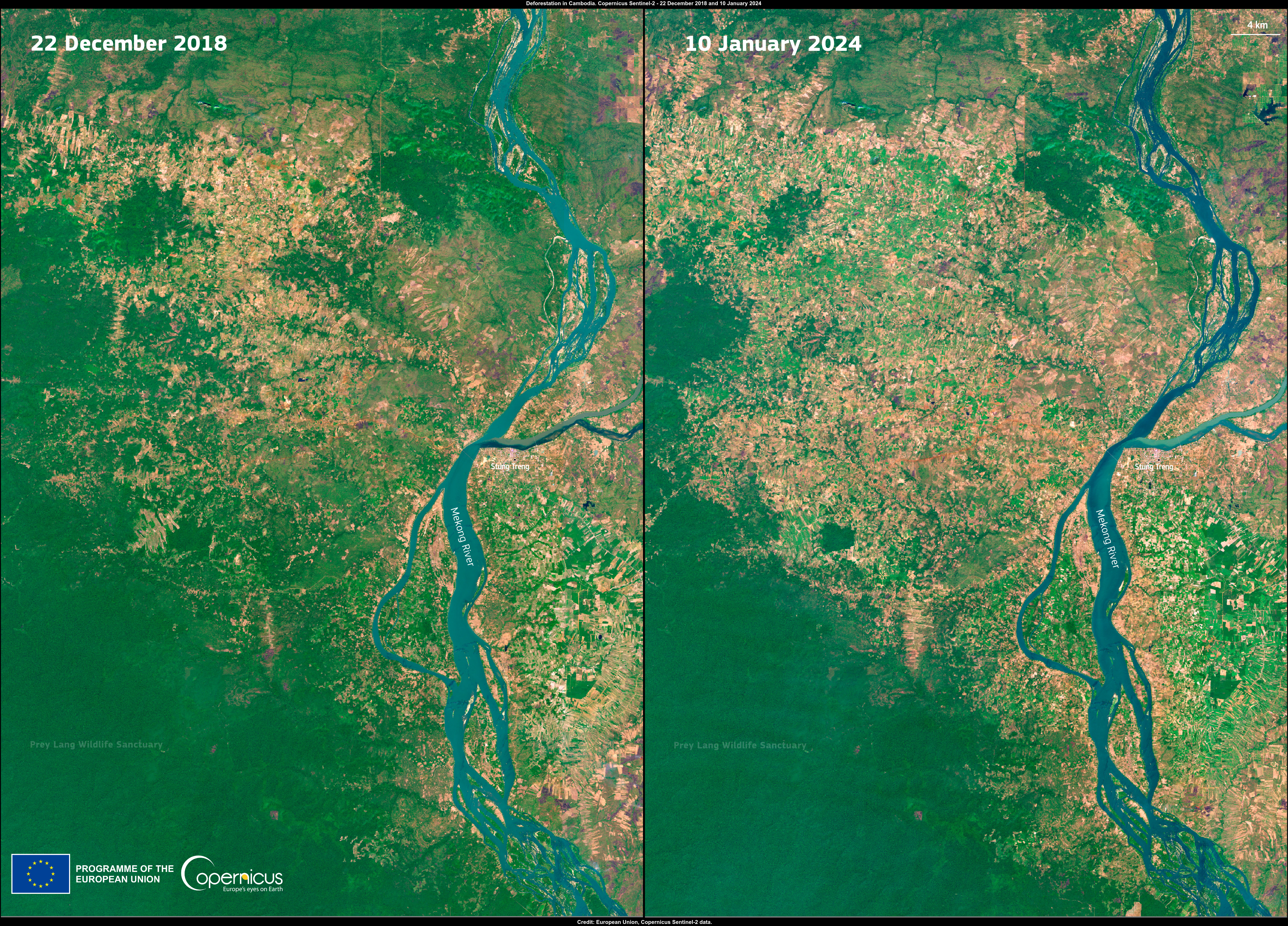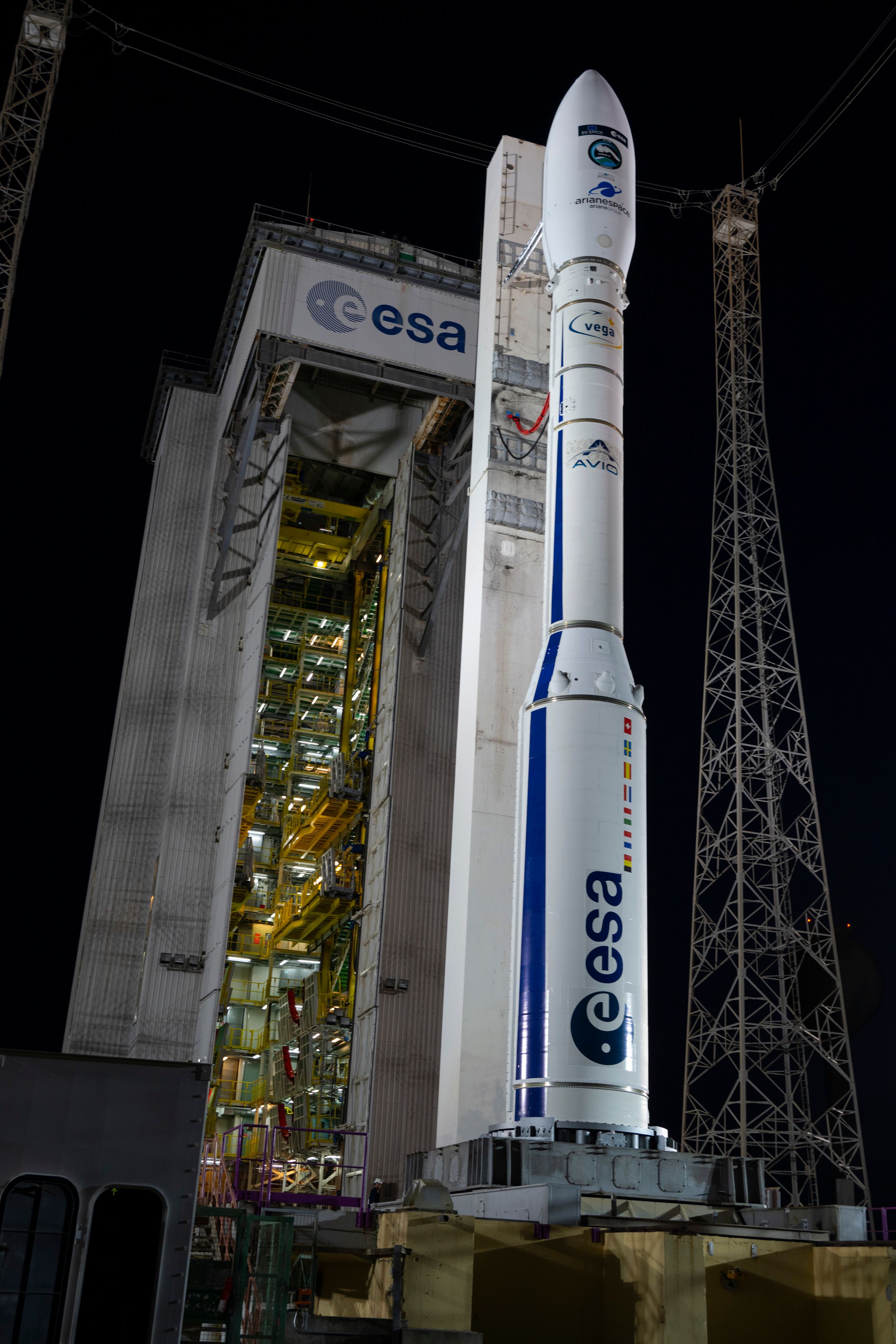Summary
- Third Copernicus Sentinel-2 satellite, Sentinel-2C, successfully launched from Europe’s Spaceport on Vega rocket.
- Sentinel-2C will provide high-quality optical imagery and eventually replace Sentinel-2A, which launched in 2015.
- Vega rocket completes its final mission after 20 launches over 12 years, making way for the upgraded Vega-C rocket.
The third Copernicus Sentinel-2 satellite has successfully launched from Europe’s Spaceport in French Guyana. The launch was also the final flight of the original Vega rocket, which first flew over a decade ago and carried the previous two Sentinel-2 payloads into space.
Sentinel-2C launches on Vega rocket
The Sentinel-2C satellite – built by a consortium of over 60 companies led by Airbus Defence and Space – and Vega rocket lifted off from Europe’s Spaceport at 22:50 local time on September 4th. About an hour after launch, it was deployed at an altitude of around 775 km and joins the Copernicus Programme’s other two satellites – Sentinel-2A and Sentinel-2B.
Photo: ESA
The newest addition will help the program gather high-quality optical imagery on the Earth via its state-of-the-art equipment, and will eventually replace Sentinel-2A, which was deployed in 2015 and is nearing the end of its service life. Marc Steckling, Head of Earth Observation, Science and Exploration at Airbus, said,
“This launch gives the world another important sensor to monitor our changing planet and provides crucial continuity since the first Sentinel-2 satellite launch in 2015.”
Photo: ESA
The satellites work by flying in a tandem orbit but separated by 180°, enabling them to cover the entirety of Earth every five days. They are equipped with a high-resolution multispectral imager that can generate continuous imagery in 13 spectral bands, with each satellite gathering around 1.5 terabytes of data every day.
ESA’s Director of Earth Observation Programmes, Simonetta Cheli, commented,
“We are thrilled to celebrate the successful launch of Sentinel-2C, a new milestone in the well-established collaboration between ESA and the European Commission.”
Photo: European Union, Copernicus Sentinel-2 imagery
Another launch carrying Sentinel-2D – set to replace the Sentinel-2B – is also planned for the future, likely sometime in 2028.
Final Vega rocket flight
The Vega rocket has conducted its last mission more than a decade after entering service, now making way for the more powerful Vega-C. Vega rockets made 20 launches over 12 years of service, the majority of which were a success – this includes the launches of technology demonstrator Proba-V and wind monitoring satellite Aeolus.
Photo: ESA
ESA’s Director of Space Transportation, Toni Tolker-Nielsen, commented,
“Europe’s Vega rocket launched the previous two Sentinel-2 satellites in 2015 and 2017, so this launch was a fitting farewell to a very successful rocket. Teams are already preparing for the next Vega launch, the upgraded Vega-C, by the end of the year. Today’s liftoff was Vega’s 20th successful launch in its 12 years of service, farewell Vega, long live Vega-C!”
However, Vega did suffer two failures, one in July 2019 followed by another in November 2020, leading to the loss of its satellite payloads. The Vega-C completed its first mission in July 2022 with a satellite launch for the Italian Space Agency. However, its second mission – VV22 in December 2022 – was a failure, and the rocket was grounded by the European Space Agency (ESA).
According to a SpaceNews report, the current timeline has the rocket returning to service in November 2024, after a significant redesign of its rocket motor. It will also need to undergo testing in the fall before its planned mission, which would carry the Sentinel-1C satellite into orbit – should this mission prove successful, Toni Tolker-Nielsen, ESA’s Director of Space Transportation, said the Vega-C would then complete four more flights in 2025 and five in 2026.

